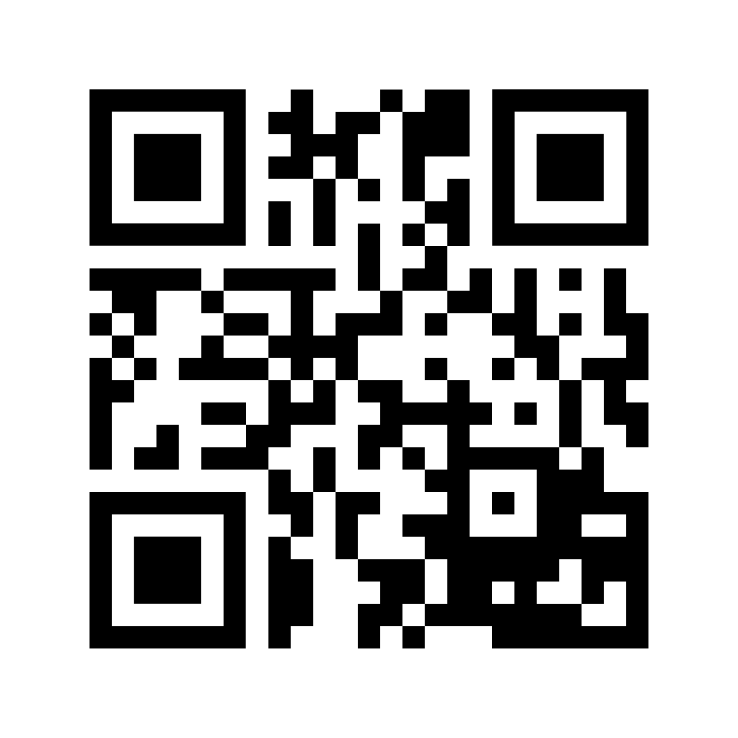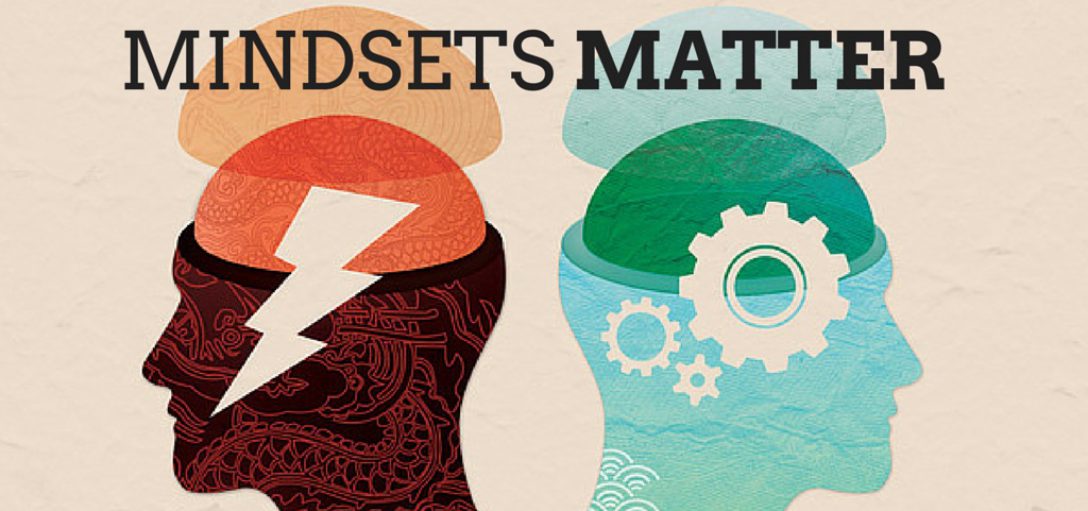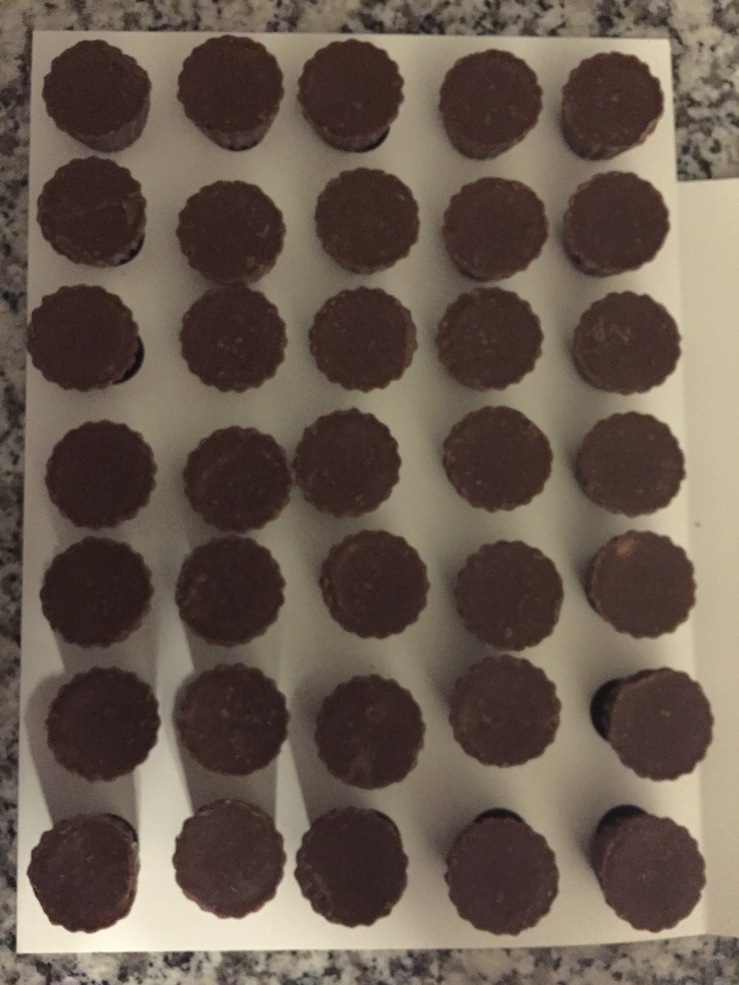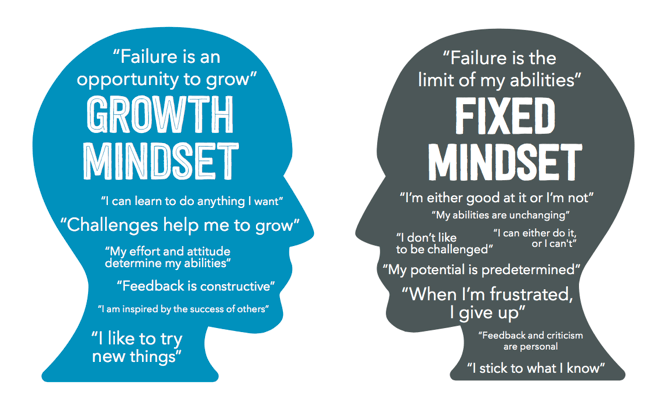For my math investigation, I chose to work with one of my former students from last year on some core ideas of addition as shown on page 84. This student will be entering fourth grade, but lacks confidence and a growth mindset in mathematics.
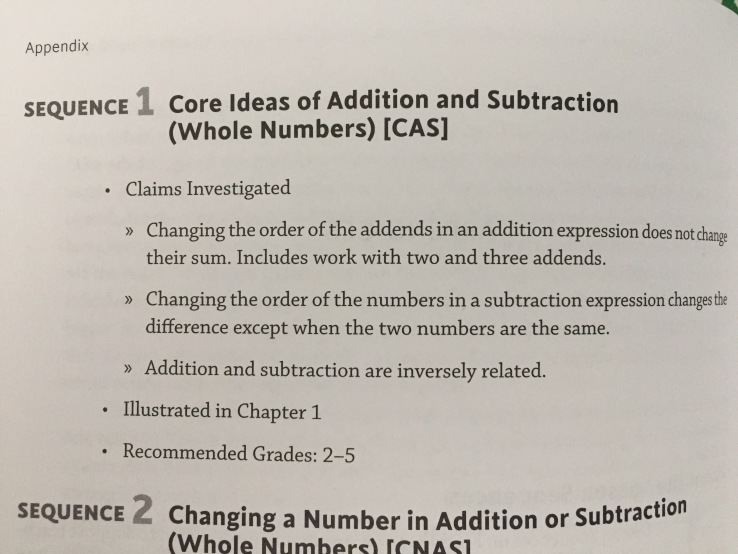
Phase 1: Noticing Regularity
I presented my student with eight number sentences written on a piece of paper. Four of them were already solved and asked him to solve the remaining four number sentences. (Gathering Information, pg 36 Principals to Actions)
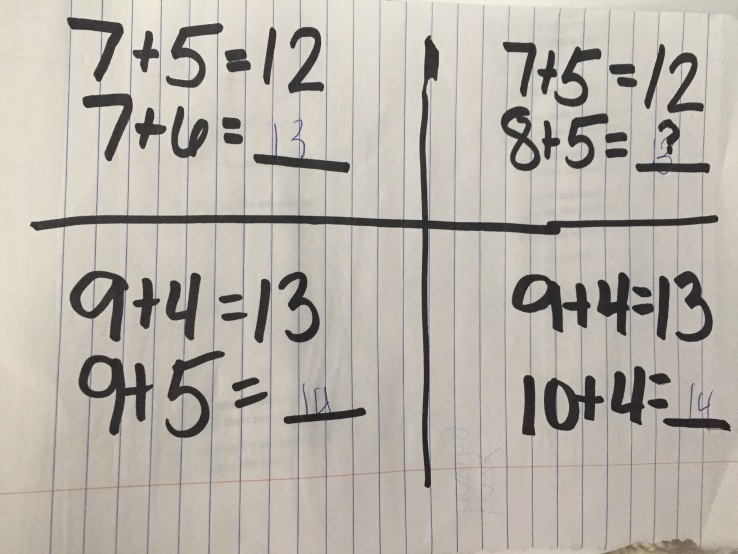
When I asked the student to solve the remaining number sentences, he immediately used his fingers to solve them. He did not right away notice the pattern that the sum increased by 1, and the addend increased by one as well.
I prompted the student with: What do you notice? (Probing Thinking, pg 36 Principals to Actions) I think this questioned surprised my student. He was so used to someone asking him to find the answer, but not asking him any follow up questions. He sat and looked at the problems for a minute, and said they are all adding.
I asked again- “What else do you notice?”(Probing Thinking, pg 36 Principals to Actions) . I gave him some time to really look at the work and the problems presented. Finally he said, “they are one more”. I asked him “what is one more?”(Probing Thinking, pg 36 Principals to Actions) . He pointed out the sums in the first problem stating that 13 is one more than 12.
I asked “What is happening here?” and pointed to the number sentence (Probing Thinking, pg 36 Principals to Actions) . At this point, he shrunk in his seat wondering why I was asking so many questions. It was as if he was thinking, “I gave you the answer, now let’s move on”. It dawned on me, he has escaped explaining how and why he does things, and noticing patterns in his work. Finally, after some good “wait time”. I got out of him, “This one is one more than that one”. I asked him if he could say that another way. Finally, I heard some math talk! He restated his statement into, “the sum goes up by 1”! Fantastic! A math observation! A notice of patterns! I followed this up with, “what else do you notice?”.(Probing Thinking, pg 36 Principals to Actions) With some more wait time, he began to explain. He explained that the sum is going up by one because one number stays the same, and one number goes up by 1.
Phase 2: Articulating a Claim
At this point, I explained we would write a conjecture, stating our observations. The student wrote- The sum gets bigger by one. One number stays the same and the other number gets to be one number bigger.
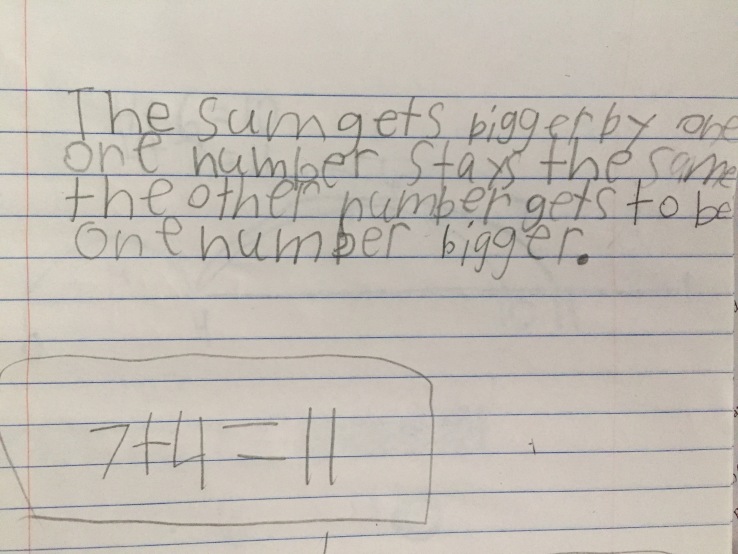
As a side note, I asked him what the sum was. He was quick to respond with the answer to an addition problem. I then asked if he knew what the other numbers in an addition number sentence were called, and he did not have the vocabulary addend.
Phase 3: Investigating Through Representations
I used the example on page 35 of But Why Does It Work with my student and told him the story problem but changed the names to his brother’s name and his name:
“Nomi found 4 rocks and Alec found 6. How many rocks did they find?” (pg 35, But Why Does It Work)
Using fingers, the student told me they had 10 rocks altogether.
“On the way home, Alec found 1 more rock. Now Nomi has 4 rocks, and Alec has 7. How many rocks did they find?” (pg. 35 But Why Does It Work).
After, recounting he told me 11. To help keep this information in our head, we wrote down the number sentences on paper.
4+6=10
4+7=11
I asked him to create a representation to show why the sum must increase by 1. (Making The Mathematics Visible, pg 37 Principals to Actions) Immediately, he drew a set of dots.

First, he drew 6 dots, plus 4 more dots.
I began to ask more questions.
“Where do you see 6?”
“Where do you see 4?”
“Where do you see 10?”
“How is addition represented?”
Where do you see the 1 that was added to the 6?”(Encouraging Reflection and Justification, pg 37 Principals to Actions)
This is where he was unable to answer, because he had forgotten to show adding the 1 to the 6. So far, he had given me 6+4. To show that he added one more, he drew a dot off to the side, and an arrow to the set of 6, and then added that dot to the set of 6 to have a set of 7.
Phase 4: Constructing Arguments
Just looking at his drawing could be confusing to some students, so I asked him to explain it. He explained that he found one more rock, so he added another circle to his drawing to turn 6 into 7 and make the sum 11 now. (Making The Mathematics Visible, pg 37 Principals to Actions)
I asked him to think of another way to show his thinking, but he was unable to produce another form to explain how and why this conjecture worked. This is when it would have been a great opportunity to have more minds to show other way of thinking and other proof.
At this time, I pretended to be a student as explain to him; I was thinking in the form of a number line so he could see more than one way to represent and explain why the conjecture must be true. As soon as I began working, we had that moment all teachers hope for, when the lightbulb turns on! Before I could finish explaining my thinking, he was finishing it for me. I began with my number line and showed; 4 rocks and 6 more rocks show 10 rocks. He chose to take the pen and add in the jump of 7 to show the sum increases by 1 to 11.
After seeing it represented a different way, I asked him again if he could show me another way. At this point, he was able to show me 6 cubes, plus 4 cubes colored in is 10 cubes. Add another cube (represented with lines drawn on it), and the sum changes to 11.
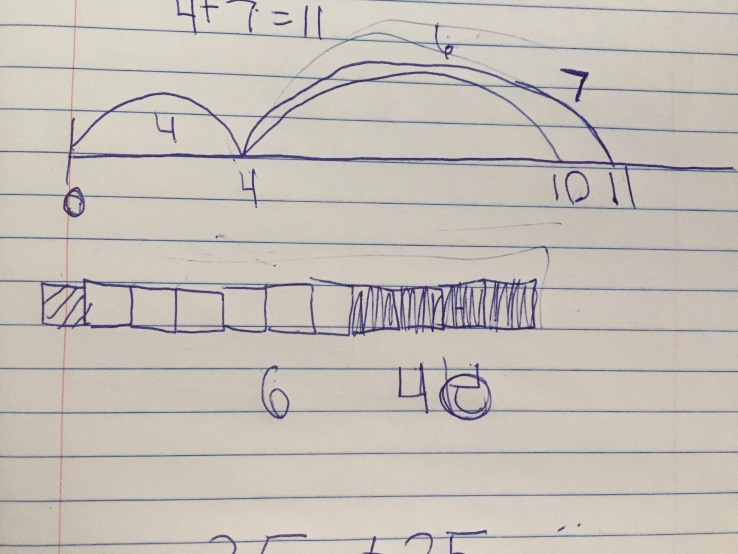
Phase 5: Comparing Operations
To consider if this works for other operations, I next gave him a sheet with some subtraction problems on it.
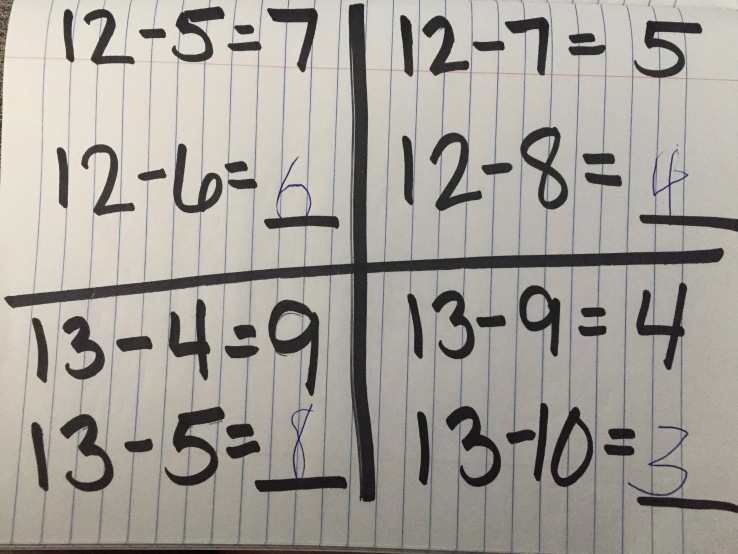
I asked if the same conjecture we wrote would be true for these number sentences as well.(Exploring Reflection and Justification, pg 37 Principals to Actions) He was able to tell me it did not, because as one number went up in the number sentence, the difference went down by 1.
In Conclusion: I noticed my student became very uncomfortable when I asked him to really look at what we were doing, locate patterns, and explain his thinking. “We want students to feel free as they work on math, free to try different ideas, not fearing that they might be wrong. We want students to be open to approaching mathematics differently, being willing to play with mathematics tasks, trying “seemingly wild ideas” (pg 14, Math Mindsets). Through these phases, my student was able to struggle, look for patterns, and try different approaches to solve and explain his thinking. We were able to go through the four stages of mathematics as proposed by Wolfram (2010).
1. Posing a question- What is the pattern here? What do we notice? If we increase an addend by 1, does the sum always increase by 1?
2.Going from the real world to a mathematical model- Creating a visual representation of our thinking to prove our conjecture.
3. Performing a calculation- solving our models, to see if they answer our number sentences.
4. Going from the model back to the real world, to see if the original question was answered – Going back to see if our models prove our conjecture, and apply to other operations.
I would like to see how this can work in my classroom with more minds, ideas, approaches working together to explain thinking and identify what we notice and why it works. I noticed some lack of vocabulary in my student, as well as a lack of a growth mindset. It made me wonder how many of my other students are also lacking in those areas, and what I can do to help them have a growth mindset in the upcoming school year. I believe, using this approach to mathematics will help all my students increase their mathematical reasoning, and move toward a growth mindset to have the skills necessary to not only succeed in third grade mathematics, but in life.
